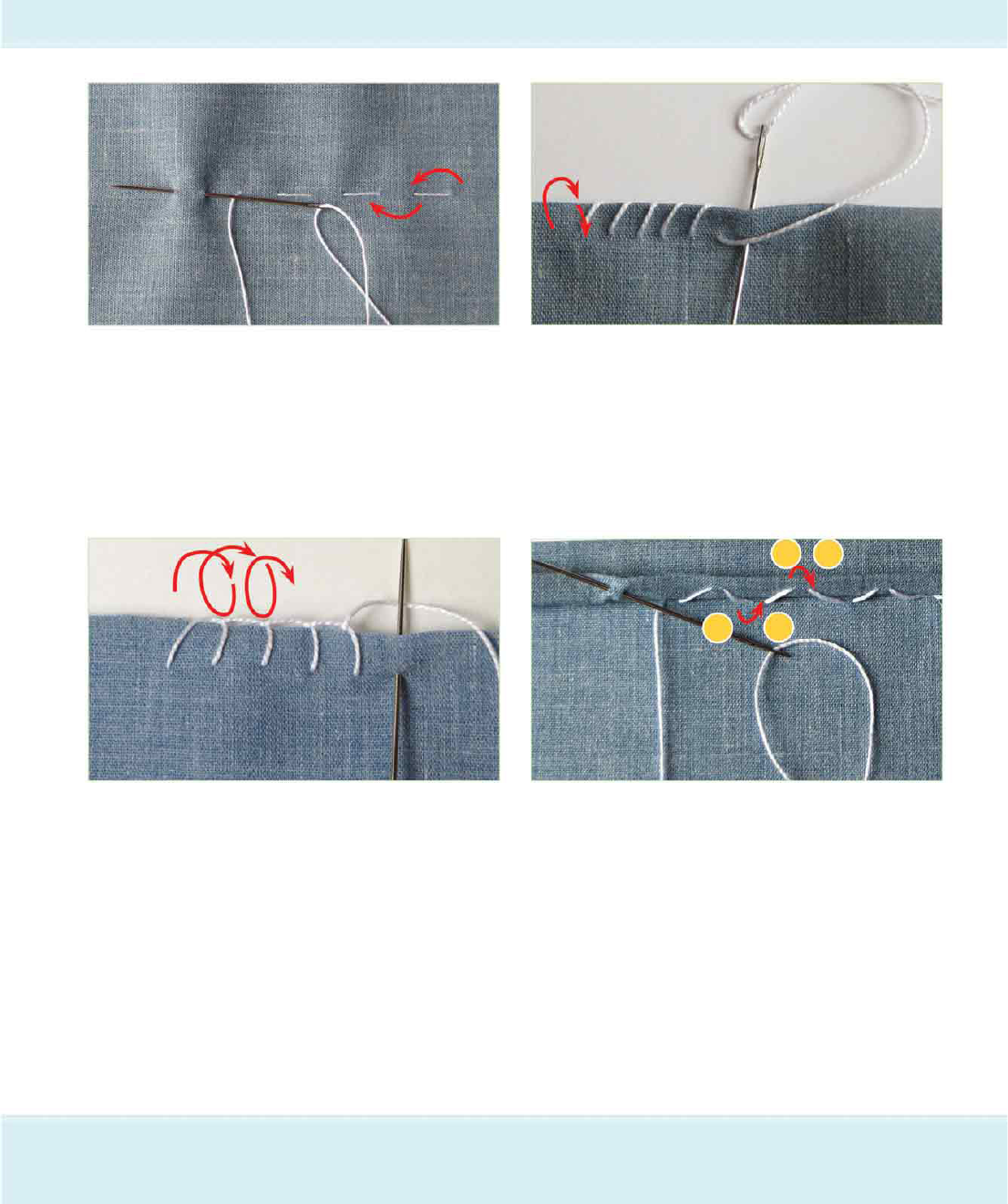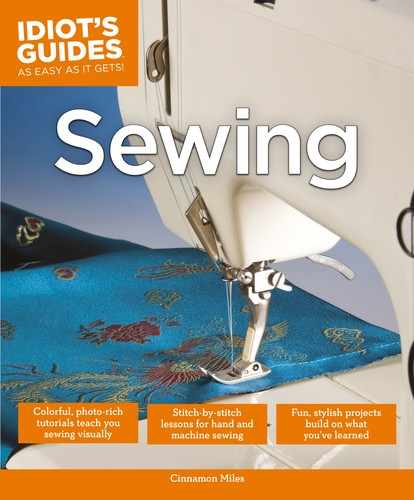
Backstitch: This stitch is used to create a strong
seam. Start by bringing the needle up from the back
of the fabric at point A. Insert your needle back
down at point B. Bring the needle up a stitch length
in front at point C. Insert the needle back down at
point A. Continue along until you’ve reached the
end of the seam.
Types of Stitches
42 Part 2: Start Sewing
A BC
A
BC
D
A
B
C
D
Prick stitch: Also called a pick stitch, this is a variation
of the backstitch used to sew in a zipper by hand or
reinforce a seam. Start by bringing the needle up from
the back of the fabric at point A. Insert your needle
back down at point B. Bring the needle up a stitch
length in front at point C. Insert the needle back down
at point D, and continue along until you reach the end
of the seam. The top stitches will look like small pricks,
and the bottom stitches will be a longer stitch.
Catch stitch: This stitch is used to sew a hem with
hardly any stitch showing on the outside. Working from
left to right and with your needle always pointing left,
make a small stitch through the hem fold (A to B).
Place the next stitch
1
/
4
inch (.6 cm) away on the back-
side of the garment, taking up just a few threads (Bto
C to D). Continue the next stitch on the hem fold,
repeating the crisscross pattern.
ffCH3_Sewing.indd 42 5/23/13 3:36 PM

Running stitch: This stitch is used to create a
strong seam. Bring up your needle from the back-
side and weave your needle in and out of the fabric,
spacing your stitches about
1
/
8
inch (.3 cm) apart.
The stitch should look the same on both sides of the
fabric.
43Chapter 3: Stitching Basics
Blanket stitch: This stitch is used to sew an edge
stitch on a blanket or piece of felt. Start by bringing
your needle up to the front, about
1
/
4
inch (.6 cm) away
from the edge. Working left to right and staying on
the front side of the garment, place your needle about
1
/
4
inch (.6 cm) away from the first stitch and from the
edge. Push the needle through the garment, but come
up again by going through the thread loop. Pull gently
to create the blanket stitch.
A
B
C
D
Blind hem stitch: Similar to a catch stitch, this stitch
is used to sew a hem with hardly any stitch showing on
the outside of the garment. Start by folding back the
pressed-up hem so only
1
/
8
inch (.3 cm) shows past the
fold. Working right to left, take up a small stitch in hem
allowance (A to B). Make next stitch
1
/
4
inch (.6cm)
away on the back of the garment, taking up only a
few threads (C to D). Continue the next stitch on the
hem allowance and then again on the backside of the
garment.
Whipstitch: This stitch is used to hold two folded
edges together. Sew the stitches from front to back
near the fold, taking your needle around to the back
layers. Keep your stitches close together. This is also
a great stitch for felt edges!
ffCH3_Sewing.indd 43 5/23/13 3:36 PM
..................Content has been hidden....................
You can't read the all page of ebook, please click here login for view all page.
